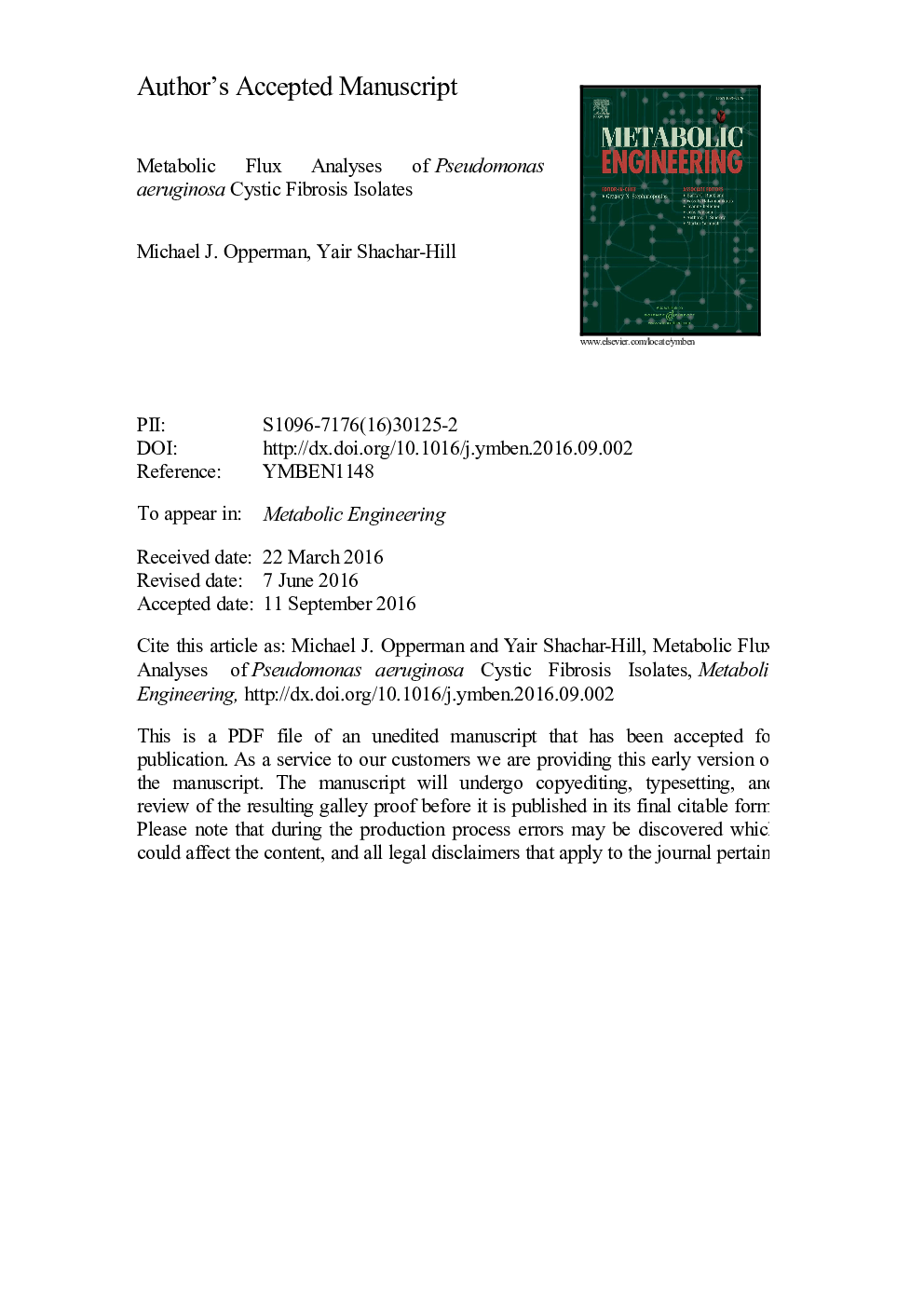| Article ID | Journal | Published Year | Pages | File Type |
|---|---|---|---|---|
| 6494200 | Metabolic Engineering | 2016 | 37 Pages |
Abstract
Pseudomonas aeruginosa is a metabolically versatile wide-ranging opportunistic pathogen. In humans P. aeruginosa causes infections of the skin, urinary tract, blood, and the lungs of Cystic Fibrosis patients. In addition, P. aeruginosa's broad environmental distribution, relatedness to biotechnologically useful species, and ability to form biofilms have made it the focus of considerable interest. We used 13C metabolic flux analysis (MFA) and flux balance analysis to understand energy and redox production and consumption and to explore the metabolic phenotypes of one reference strain and five strains isolated from the lungs of cystic fibrosis patients. Our results highlight the importance of the oxidative pentose phosphate and Entner-Doudoroff pathways in P. aeruginosa growth. Among clinical strains we report two divergent metabolic strategies and identify changes between genetically related strains that have emerged during a chronic infection of the same patient. MFA revealed that the magnitude of fluxes through the glyoxylate cycle correlates with growth rates.
Keywords
FVAOPPPEntner-doudoroff pathwayEDPHCATCAFBACCEPCACarbon conversion efficiencyFlux balance analysishierarchical clustering analysisMetabolic flux analysisFlux variability analysisPrincipal component analysisPseudomonas aeruginosaCystic fibrosissum of squared residualsOxidative pentose phosphate pathwayMFAtricarboxylic acid cycleGlyoxylate cycle
Related Topics
Physical Sciences and Engineering
Chemical Engineering
Bioengineering
Authors
Michael J. Opperman, Yair Shachar-Hill,
